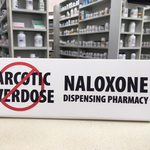Utilizing technology to address the American opioid addiction epidemic is a must. Hundreds of Americans die from an overdose each week. Over 50,000 lethal drug overdoses occurred in 2015, and 64,000 died in 2016. Experts prepared to see even more fatal overdoses this year. The numbers keep rising, and while naloxone is more available than ever, it doesn’t always work.
Time is vital to successful drug overdose reversals; the window to administer naloxone is relatively small. Furthermore, if a person overdoses on heroin laced with synthetic opioids like fentanyl and carfentanil, naloxone effectiveness is diminished. Naloxone, sold under the brand name Narcan, is sometimes no match for the potency of synthetic opioids.
First responders have no way of knowing when an overdose involves fentanyl. Information shared between cities and states about spikes in fentanyl prevalence isn’t in real time. Drug traffickers follow particular routes. If a swath of fentanyl-related overdoses happens in one area, then experts can predict which city can expect the same. Provided however that the data is readily available and easy to access. Finding out about an overdose spike in a neighboring town two weeks later doesn’t do anyone a whole lot of good.
Overdose Mapping In Real Time
EMTs sharing overdose information with each other in real time has many benefits. The Washington/Baltimore division of the High Intensity Drug Trafficking Area (HIDTA) teamed up with Esri, a geospatial technology company to create the Overdose Detection Mapping Application Program (ODMAP), NBC News reports. Jeff Beeson, the deputy director of HIDTA, points out that overdose information has been tracked in the past but it’s always isolated.
 |
| Credit: HIDTA |
First responders use ODMAP at the scene of an overdose. The program is not open to the public, and a victim’s personal information doesn’t get shared on the database. EMTs can access a website on their smartphone and share info on a particular overdose, according to the article. Was the overdose fatal? Was naloxone administered? The shared information is mapped, giving police chiefs and officials a picture of where overdoses are being reported in real-time. Using the data from ODMAP, gives officials the ability to direct the necessary resources to the right places.
“This data is moving in real time across geopolitical boundaries,” said Chris McIntosh, Esri’s director of national government industries. “It’s being analyzed in real time, so both the community and the public safety organizations can see trends when they occur — not in the days and weeks after, when someone does analysis on the data.”
Some 5,200 suspected overdoses have gotten plugged into ODMAP since January, the article reports. The program is currently being utilized in 85 counties in 19 states.
Opioid Use Disorder Treatment
Synthetic opioids have become commonplace, and overdose rates are expected to rise, as a result. The surest way to avoid potentially fatal overdoses is to seek addiction treatment. At Hope by The Sea we can help you detox from opioids, break the cycle of addiction, and start you down the road of long-term recovery. Please contact us today.


